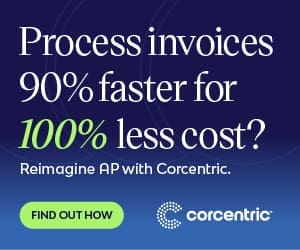A Comprehensive Guide For Optimal Industry Procurement Via Source-To-Pay Solutions

Industry Procurement
For industries seeking to manage their procurement cycle effectively, Source-to-Pay (S2P) Solution may be the answer. Known for providing companies with purchase-to-pay, invoice-to-pay, and e-commerce capabilities, S2P Solution can fulfill the needs of any industry. Utilizing this solution helps boost efficiency, drive savings, and increase visibility while leveraging variety of advanced technological features.
This article is geared towards executives in the finance department of any given organization, who are looking to purchase S2P solution. C-Suite personnel should be made aware of the various benefits that S2P solutions have to offer, as well as their use in managing their industry’s procurement cycle more effectively.
An Overview of Source-to-Pay Solutions
Simply put, S2P Solution is collection of solutions, services, software, and products that allows organizations to take controls of their procurement operations. Typically, this includes features that allow companies to take full advantage of purchase-to-pay, invoice-to-pay, and e-commerce capabilities. This suite of applications allows industry to optimize the procurement process so that they can save time and money.
Not only do S2P solutions provide cost savings, but they also increase visibility and collaboration, reduce manual efforts, raise efficiency, and increase control over the overall procurement system. Such advantages are made possible through S2P solutions’ use of the latest technological features, including cloud services, artificial intelligence, and machine learning.
Finding the Right Source-to-Pay Solution
Before an organization can make the most efficient use of its S2P, it must first find the right solution. If the C-Suite does not choose the most suitable solution for their companies needs, implementation may be time consuming, expensive, and inefficient. Here are few steps to consider when selecting the optimal S2P solution.
1. Identify Needs: An organizationshould first take inventory of its current procurement needs, such as supplier management, sourcing, financials, purchasing, e-commerce, and any other relevant processes. This will help in the evaluation process and ensure that the right solution is purchased.
2. Determine Budget: It is important to consider the cost of the solution and system integration before making purchase. Establishing budget will make it easier to find the right product within the allotted budget..
3. Consider Functionality: S2P solutions come with variety of different features, with varying levels of complexity and functionality. C-Suite personnel should determine the functionality requirements of their solution.
4. Select Provider: It is crucial to research and select reputable solution provider that has experience in the industries of need.
5. Analyze: After selecting solution provider, it is important to analyze the S2P solutions for compatibility with existing systems and for the needs of the organization.
6. Implement: After performing this analysis, it is time to implement the S2P solution. This typically requires assistance from the provider.
7. Train: Following implementation, it is necessary to train employeeon the operation of the S2P solution. This is important for ongoing performance and for achieving optimal results.
8. Monitor: Lastly, organizations should monitor their S2P solution to ensure that it is performing efficiently and that any necessary modifications are made.
Conclusion
Managing industry procurement is difficult task. However, with the right S2P solution, executives can expect to benefit from efficient and cost-effective solutions that provide all the tools necessary to manage their organizations? purchase-to-pay, invoice-to-pay, and e-commerce needs. Furthermore, using S2P solution allows executive to increase visibility, reduce manual efforts, and improve collaboration. Ultimately, implementing such solution empowers C-Suite personnel to see bottom-line savings and bolster the overall efficiency of their organization.

